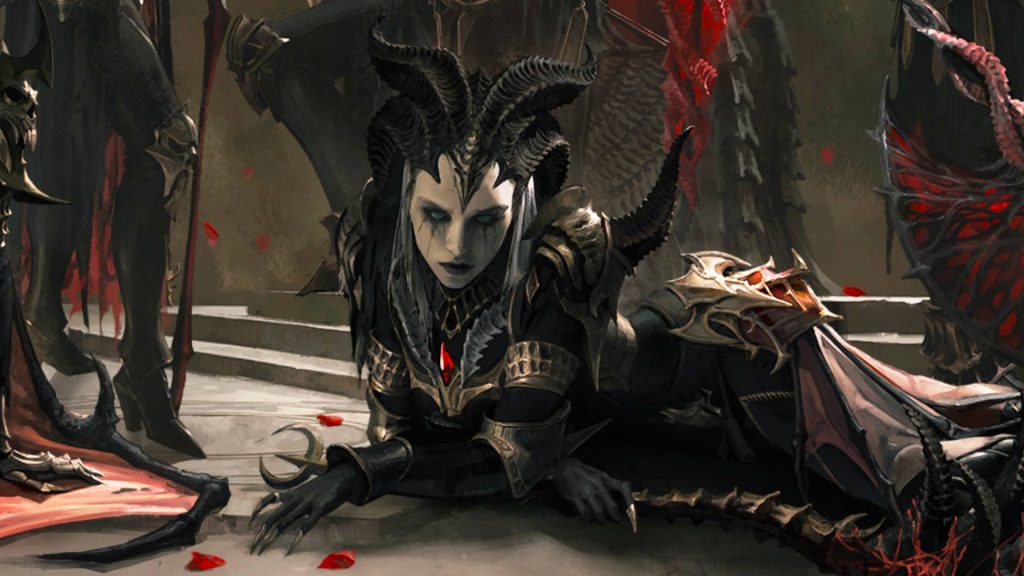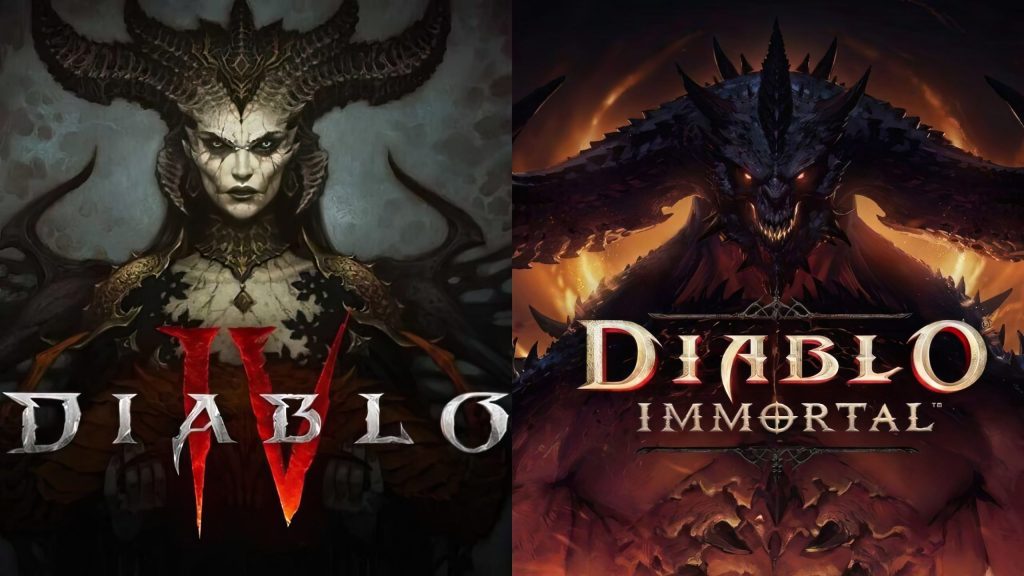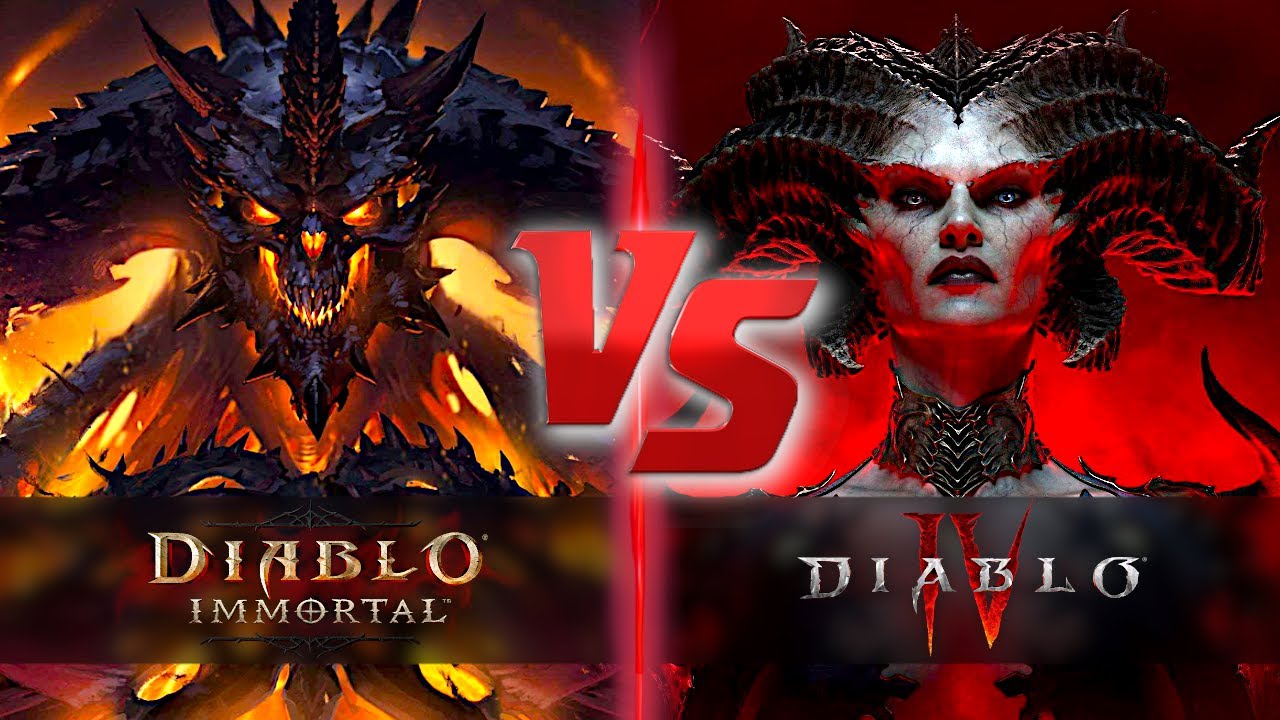Introduction
The Diablo franchise has long stood as a pillar of the action RPG genre, delivering a dark, gripping world filled with demons, lore, and loot. Over the decades, the series has evolved dramatically, catering to different generations of players and adapting to various platforms. Two recent entries—Diablo 4 and Diablo Immortal—stand out as defining moments for Blizzard Entertainment’s adaptation of the franchise to modern gaming demands. But while both titles share the same demonic DNA, they are starkly different in gameplay mechanics, platform focus, monetization strategy, and user experience.
For anyone weighing the pros and cons of each, or wondering which entry to commit time (and possibly money) into, this deep comparison will help illuminate every aspect. Let’s delve into the comprehensive analysis of Diablo 4 vs Diablo Immortal, exploring what each game brings to the table and how they shape the Diablo legacy in their own ways. Please visit this.
Gameplay Experience: Depth Vs Accessibility

When it comes to gameplay, Diablo 4 pushes the franchise deeper into the action RPG space with a more immersive and expansive experience. It reintroduces many fan-favorite mechanics like a truly open world, class customization, and complex skill trees, while also evolving combat to be more visceral and weighty. The introduction of mounts and seamless zone exploration gives it an MMO flavor without compromising the core Diablo feel. Combat in Diablo 4 is heavier, more deliberate, and brutally satisfying. Each class feels uniquely powerful, and the emphasis on building diversity encourages experimentation and strategic planning.
On the other hand, Diablo Immortal focuses on accessibility and mobile-first gameplay. Designed initially for smartphones but later ported to PC, Immortal embraces streamlined mechanics, auto-navigation, and simplified gear systems to cater to shorter play sessions and a more casual audience. While it still delivers responsive and engaging combat, the complexity is toned down. Players can jump in for quick bursts, making it ideal for those with limited time or those new to the genre.
The core loop in Immortal is more repetitive but faster-paced, offering near-constant rewards and progression. Diablo 4’s loop, in contrast, is slower, with a greater emphasis on storytelling, exploration, and long-term build crafting. For those looking for depth, Diablo 4 wins. For quick and consistent gratification, Immortal delivers.
Graphics And Visual Fidelity: Next-Gen Realism Vs Mobile Efficiency
Visually, Diablo 4 is a masterclass in dark fantasy design. It boasts a gritty, atmospheric style that pays homage to Diablo 2 while adopting modern graphics capabilities. The environments are sprawling, detailed, and filled with subtle animations that bring the world of Sanctuary to life. From snow-covered peaks to blood-soaked dungeons, each biome is distinct and loaded with environmental storytelling.
Diablo Immortal, while graphically impressive for a mobile game, naturally lags behind due to platform limitations. Its visuals are more colorful and polished rather than grim and oppressive, which slightly shifts the tone from its mainline counterpart. The animations are smooth, and the art direction is consistent, but the lack of high-end lighting, particle effects, and shadow detailing places it a step below the cinematic presentation of Diablo 4.
For players who value immersive visuals and atmospheric depth, Diablo 4 clearly outshines Immortal. However, for a game designed to run on a wide range of smartphones, Immortal still manages to offer a visually satisfying experience.
Story And Lore: A Tale Of Two Experiences
Diablo 4 continues the epic narrative of Sanctuary in a darker, more mature tone. The story follows the resurrection of Lilith, the Daughter of Hatred, and plunges the world into chaos. The narrative is delivered through fully-voiced cinematics, real-time cutscenes, and world events that keep players deeply engaged in the unfolding drama. The storytelling is more character-driven, exploring themes of corruption, redemption, and human frailty in a world ravaged by eternal conflict.
Diablo Immortal serves as a narrative bridge between Diablo 2 and Diablo 3. While it contributes meaningful lore and fills in historical gaps, its storytelling is more fragmented and less impactful. Most quests follow traditional MMORPG structures, with fetch tasks and brief dialogues guiding the player from one hub to another. While it does offer some intriguing side stories and lore nuggets, the emotional depth and gravitas present in Diablo 4 are largely absent.
Ultimately, for players who prioritize lore, character development, and narrative immersion, Diablo 4 is the clear winner. Immortal’s story is serviceable and enjoyable in shorter bursts, but lacks the cohesion and drama of its more expansive sibling.
Class Variety And Customization
At launch, Diablo 4 featured five highly distinct classes: Barbarian, Druid, Rogue, Sorcerer, and Necromancer. Each class is deeply customizable through skill trees, legendary aspects, Paragon Boards, and gear mods. This level of customization supports a wide variety of viable builds, which evolve throughout the game. Whether players want to focus on elemental magic, shadow damage, bleed effects, or summoning, there’s depth and flexibility in every character path.
Diablo Immortal also offers several classes, including Barbarian, Demon Hunter, Monk, Wizard, Crusader, and Necromancer. While each class feels different, the customization options are far more limited. Builds are largely influenced by legendary gear and skill combinations, but there is less variety and fewer long-term progression systems compared to Diablo 4.
Those who love tinkering with builds and pushing theorycrafting to its limits will find Diablo 4 much more rewarding. Immortal simplifies these systems for accessibility, making it easy to pick up but harder to master.
Monetization Model: Pay-To-Win Vs Premium Experience

One of the most controversial aspects of Diablo Immortal is its monetization strategy. While the game is free-to-play, it heavily leans into microtransactions. Players can buy Eternal Orbs, Battle Passes, Legendary Crests, and other resources that can directly or indirectly affect power levels and progression. While the core game is playable without spending money, those who invest real currency will often enjoy faster progress, better loot chances, and more endgame rewards. This has led to criticisms of a “pay-to-win” environment, particularly in PvP and leaderboards.
Diablo 4, by contrast, adopts a traditional premium model. Players pay upfront for the base game and have the option to purchase seasonal passes, which offer purely cosmetic rewards and do not affect gameplay. This creates a more level playing field where success is determined by skill and dedication rather than spending power.
From a fairness and consumer-friendliness perspective, Diablo 4 offers a more honest and rewarding experience. Diablo Immortal may cater to casual users who don’t mind microtransactions, but its monetization can be off-putting to those seeking a more balanced challenge.
Endgame And Replayability
Endgame content is crucial for keeping players invested, and both titles approach it differently. Diablo 4 offers Nightmare Dungeons, Helltides, Tree of Whispers, World Bosses, and seasonal challenges. The addition of the Paragon Board adds another layer of build customization, encouraging players to continue leveling and refining their characters. Blizzard has promised ongoing support with frequent updates, expansions, and seasonal themes, giving the endgame real staying power.
Diablo Immortal features a more MMO-styled endgame. Activities include Elder Rifts, Challenge Rifts, Battleground PvP, Clan Wars, and raids against Helliquary bosses. These are designed for daily and weekly engagement and emphasize competitive leaderboards and social interaction. However, the repetition and grind, compounded by monetization systems, can cause fatigue over time.
While both games offer plenty of post-campaign content, Diablo 4’s endgame feels more robust and meaningful due to its focus on player agency and long-term progression. Immortal’s endgame is engaging but becomes heavily reliant on daily chores and rewards systems.
Platform Availability And Performance
Diablo Immortal was initially designed as a mobile-first game, with controls optimized for touchscreens and short sessions. It is available on both Android and iOS, and also offers a PC version with keyboard and mouse or controller support. Despite its mobile origins, it runs surprisingly well on PC, although it doesn’t fully utilize the platform’s capabilities.
Diablo 4, in contrast, is a true multi-platform title from the ground up. It’s available on PC, PlayStation, and Xbox, with full controller support and cross-platform play. The performance across platforms is generally solid, and Blizzard’s server infrastructure supports seamless multiplayer experiences across consoles and PC.
For players who primarily game on mobile or want a portable experience, Immortal is the clear choice. For those who crave a high-fidelity, immersive RPG experience with proper PC and console support, Diablo 4 is unmatched.
Community Engagement And Player Feedback
The Diablo Immortal community has been passionate but divided. While many appreciate its accessibility and enjoy the mobile experience, a significant portion of the feedback has centered on its aggressive monetization. Despite this, Blizzard continues to support the game with content updates, new classes, and community events.
Diablo 4, on the other hand, launched with massive anticipation and has generally been well-received, albeit with criticism over certain balancing issues and bugs in early seasons. The development team has been more transparent and responsive to feedback, issuing patches and quality-of-life updates that reflect community concerns.
In terms of fostering a positive and engaged community, Diablo 4 currently holds the edge. Its communication strategy and commitment to long-term improvements have earned it goodwill from the player base.
Multiplayer And Social Features
Both Diablo 4 and Diablo Immortal embrace multiplayer elements, but they do so in notably different ways due to their target audiences and platforms. In Diablo 4, multiplayer is woven seamlessly into the open world experience. As players explore Sanctuary, they may encounter others engaging in world events, taking down bosses, or simply passing by. The game incorporates both cooperative PvE and structured PvP through the Fields of Hatred. Grouping with friends or strangers is fluid, with options for voice chat, text communication, and in-game emotes. While it is fully playable solo, Diablo 4 shines when adventured with a party, especially in higher-tier dungeons and world events.
Diablo Immortal, on the other hand, leans more heavily into the MMO side of multiplayer. The game features bustling hubs filled with players, and content like dungeons, raids, and Battlegrounds is designed around social interaction and group synergy. Clans and Warbands are critical components of the game’s progression systems, encouraging consistent teamwork. Immortal also offers PvP-centric modes such as the Cycle of Strife and faction wars that engage players in competitive social dynamics. The constant presence of others and structured systems for guild-like activities give Immortal a sense of ongoing community interaction that’s more immediate than the drop-in/drop-out nature of Diablo 4.
Ultimately, Diablo Immortal offers a more persistent, socially active multiplayer world, whereas Diablo 4 provides a more balanced approach that blends single-player immersion with cooperative and competitive features that feel organic rather than forced.
Seasonal Content And Game Longevity

One of the core elements that determines a title’s longevity is how well it handles seasonal updates and new content. Diablo 4 utilizes a structured seasonal model, with each season introducing fresh mechanics, new questlines, legendary aspects, and unique cosmetics. These seasons are built around compelling themes and are intended to reset the player experience while encouraging new builds, challenges, and goals. Each season adds several dozen hours of potential playtime, enhancing replayability and keeping long-term players engaged. Importantly, these updates are not monetized beyond the optional cosmetic battle pass, which ensures a fair playing field.
In contrast, Diablo Immortal also follows a seasonal model, but it is much more monetization-driven. New content often accompanies a battle pass and rotating limited-time events that encourage players to log in daily. While this provides a steady stream of things to do, the content is often more superficial, and progress can feel gated unless players commit significant time—or money. Though frequent updates keep the experience feeling fresh, the seasonal structure in Immortal tends to revolve more around cosmetic skins, time-gated events, and leaderboard resets than meaningful gameplay evolution.
Conclusion
Choosing between Diablo 4 vs Diablo Immortal ultimately comes down to what you seek in your gaming experience. If you want a rich, immersive, and challenging adventure that demands time, creativity, and offers a massive world to explore, Diablo 4 is the definitive experience. It represents the evolution of the series with modern design principles, powerful storytelling, and deep customization.
However, if your lifestyle demands convenience, quick access, and short bursts of fun, Diablo Immortal is a competent, mobile-friendly option that captures the core Diablo essence in a more digestible format. It’s great for new players or those looking for an action RPG on the go.
Each game caters to a different audience and use case. One isn’t necessarily “better” than the other—it’s about which format, tone, and gameplay depth align with your preferences.

